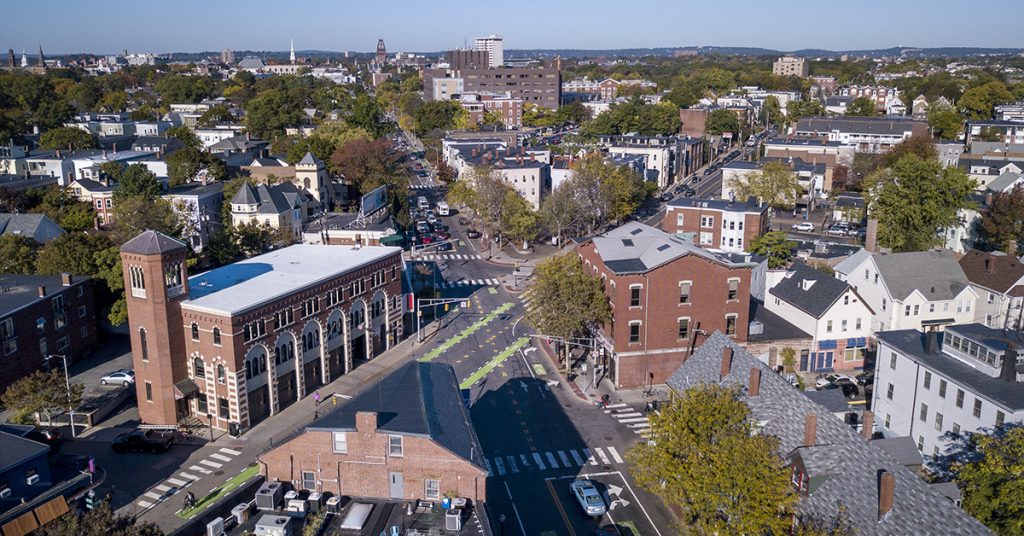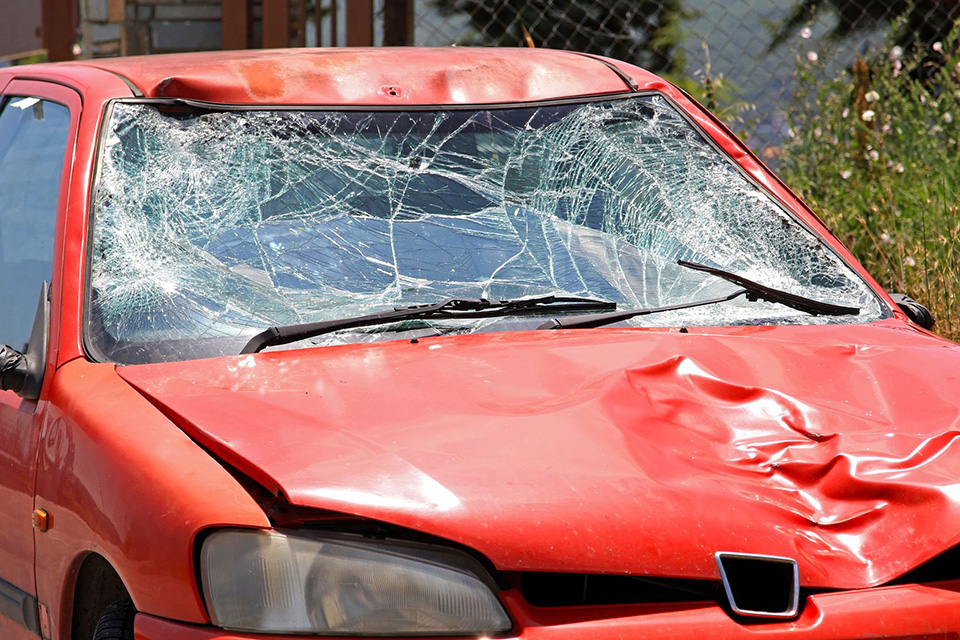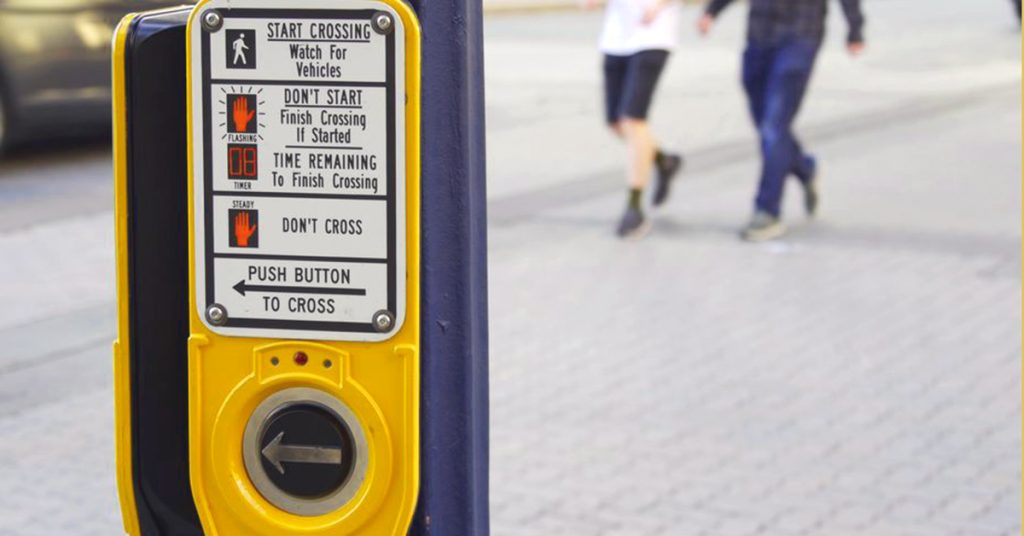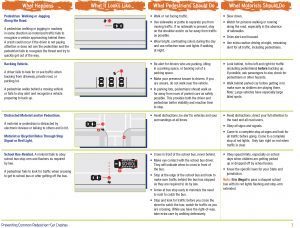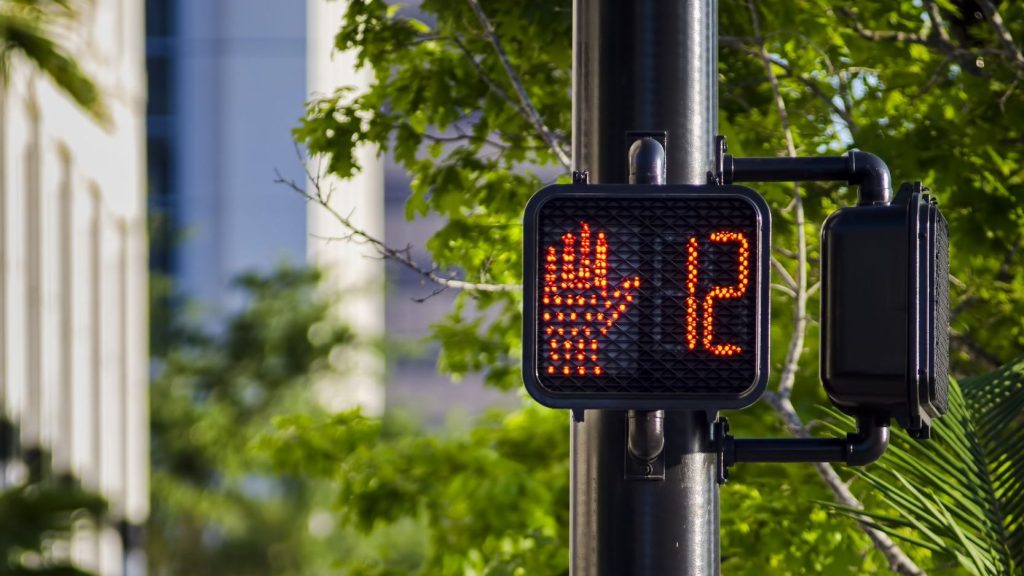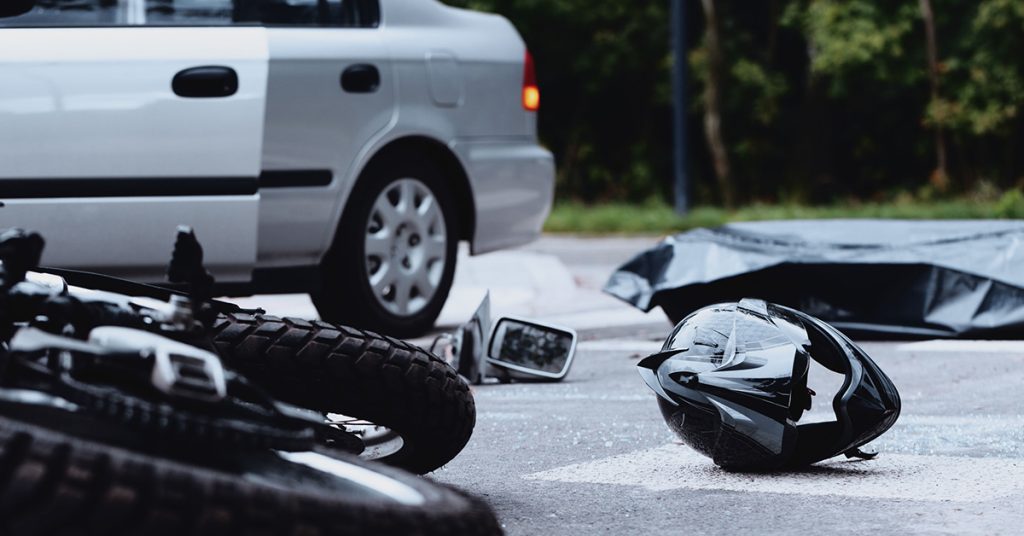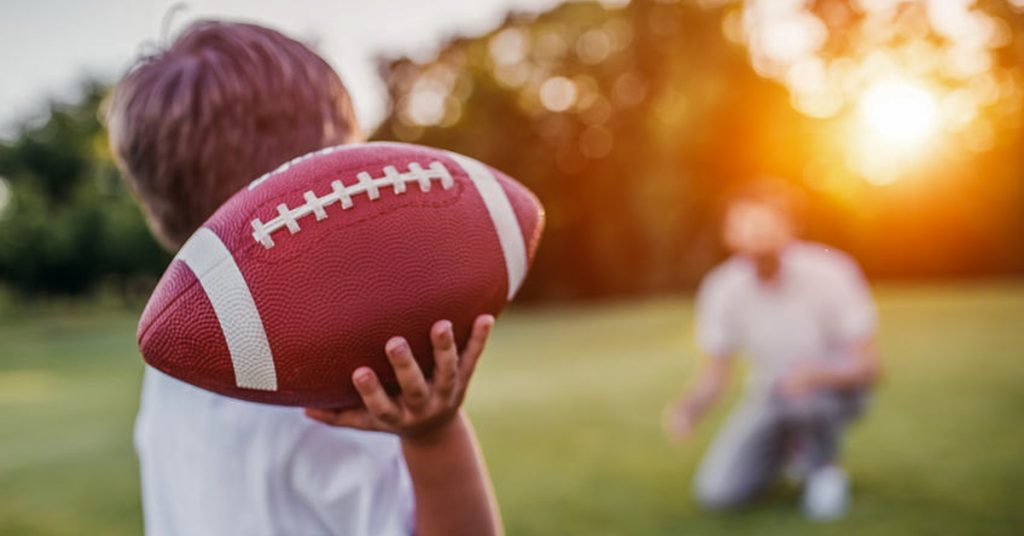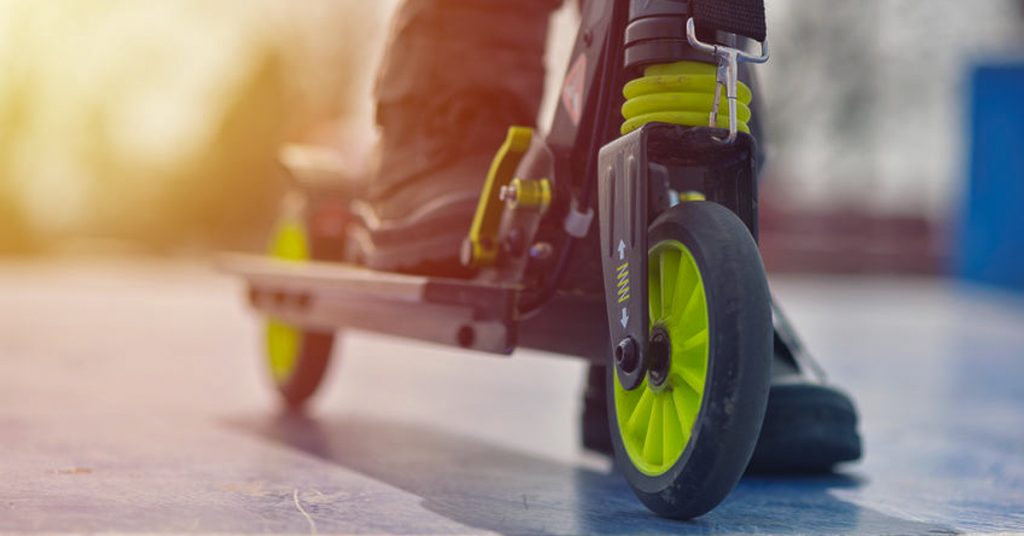Negligence
For Teen Drivers, Fewer Passengers is Safer

For safety, teens are not allowed to drive with their friends for the first six months of holding a driver’s license in Massachusetts.
Teen Driver Safety Week is Oct. 18-24, 2020. Breakstone, White & Gluck is sharing articles to encourage parents and teens to collaborate and discuss safe driving decisions.
In Massachusetts, drivers who are at least 16 ½ are eligible to receive their driver’s license after a six-month permit period. Because Massachusetts has a Junior Operator Law, teens do not immediately assume full driving privileges. There are restrictions to help reduce the risk of teen car accidents, including one on passengers.
For the first six months, Massachusetts junior operators are not allowed to travel with friends and others under age 18, unless accompanied by another driver who is at least 21 years old and meets other requirements mentioned in statute below. There is an exemption for siblings and family members. The passenger restriction is a critical part of the law, giving teens more time to learn road skills without the distraction of friends.
M.G.L. c.90 § 8 states, “No person holding a junior operator’s license shall operate a motor vehicle during the first 6 months of licensure while a person under 18 years of age, other than the operator or an immediate family member of the operator, is present in the vehicle unless also accompanied by another person, duly licensed by his state of residence, who is at least 21 years of age with at least 1 year of driving experience and who is occupying a seat beside the driver.”
The passenger restriction should be taken seriously. As we discuss below, the distractions of carrying other teens combined with driver inexperience, can contribute to the risk for car accidents resulting in catastrophic injuries such as brain injuries and paralysis, and death. Car crashes are the leading cause of death among teens, according to the Centers for Disease Control and Prevention (CDC). The junior operator law attempts to give teens more time for practice.
If stopped for carrying unlawful passengers, teens can lose their license for 60 days for the first offense. For the second offense, drivers face a 180-day license suspension and must attend driver attitudinal retraining. There is a one-year license suspension and driver attitudinal retraining for subsequent offenses.
More Passengers, More Risk for Crashes
Research has shown teens need the extra time driving without their friends.
Compared to no passengers, a 16- or 17-year-old’s risk for death per mile increases 44 percent when they carry just one passenger under the age of 21, according to the AAA Foundation for Road Safety. The risk doubles when a teen driver carries two passengers younger than 21. The death rate quadruples when there are three or more passengers.
The older the passenger, the less risk for a car accident. There is a 62 percent decrease for a crash when a passenger age 35 or older is aboard. Take this statistic as motivation to give your teens the keys as you ride along. If you develop a good routine with them, you can help them build a full range of driving skills.
As they become more skilled, reward them by letting them drive to new places – a special lunch spot or a scenic view. This helps them build skills, learn responsibility and find some enjoyment from driving. With more time, they can practice fundamentals, such as how to turn through that intersection near your home, how to check for cyclists and how to stop for pedestrians at crosswalks. When teens drive with their friends, they are less likely to give these things their full attention.
Come Up With a Driving Plan for Your Teen
The takeaway is come up with a plan for your family. If your teen just earned their Massachusetts junior operator license, the state says they are not allowed to drive with friends under 18 for the first few months but that they can drive with their siblings right away. Remember, the law is a guide. This is your choice to make based on what your teen and their siblings are ready for. Your goal is to help your teen steer clear of car accidents. Think about each situation before you say yes.
When your teen is allowed to start driving passengers under 18, take another pause. The data still shows fewer passengers is safer.
You may want to start slow. Allow your teen to drive with just one friend. Choose a friend who is responsible, trustworthy and has a parent whom you know well and shares your views on raising safe and responsible teen drivers. That parent should also share your views on open communication. If something should happen and your teen should find themselves at risk, you want your teen and their friend to both feel they can call for a ride.
Free Legal Consultation – Boston Car Accident Lawyers
Breakstone, White & Gluck has decades of experience representing by negligent driving in Boston, Cambridge, Quincy and across Massachusetts. Through our Project KidSafe campaign, we work to protect children and families. Each year, we write about National Teen Driver Safety Week to encourage parents and teens to talk about safety on the roads.
If you have been injured and want to consult a Boston car accident lawyer, you can visit our website or contact our attorneys at 800-379-1244 or 617-723-7676 for a free legal consultation. You can also use our contact form.
After Fatal Harvard Square Bicycle Accident, Cambridge Expands and Accelerates Plans for Protected Bike Lane Network
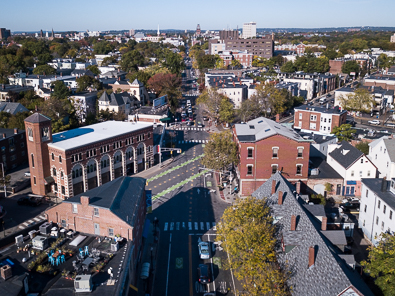
View from Inman Square, Cambridge, once ranked the top bike crash site in Massachusetts, according to MassDOT crash data. Photo: 2017, after installation of new bike lanes.
With strong encouragement from local cyclists, the Cambridge City Council voted to expand and update the Cambridge Cycling Safety Ordinance this week. The council approved the original ordinance last year, drawing national attention with an ambitious commitment to build 20 miles of protected bike lanes.
But cyclists felt there was more work to do. They recently asked the Cambridge City Council to prioritize areas for protected bike lane development, add new roads and establish a deadline for improvements.
- The Cambridge City Council approved a May 1, 2026 deadline for building out Cambridge’s network of protected bike lanes (now 22.6 miles), using either permanent construction or quick-build approaches (Source: Cambridge Bicycle Safety announcement dated October 6, 2020).
- Protected bike lanes will also be added in more areas, including Broadway, between Harvard University and Kendall Square, and Garden Street, according to according to StreetsBlog Mass.
- City councilors also voted to prioritize bike lane development in the area north of Harvard Square, directing city staff to develop a detailed plan by May 2021. Hampshire and Cambridge streets, near Inman Square, will also now move up on the work list (Source: StreetsBlog Mass).
The vote comes several weeks after a cyclist was killed in Harvard Square. In August, a large tractor-trailer struck and killed the male cyclist on Massachusetts Avenue, near Brattle Street. Just a year ago, in September 2019, another bicycle accident resulted in a female cyclist’s death in the area. A devastated family member later wrote a guest column in a local newspaper, urging the city to make safety improvements in Harvard Square.
The City of Cambridge has been studying traffic in congested Harvard Square. After the cyclist’s death in August, a city official stated Cambridge will add a separated bike lane and reduce travel lanes on Massachusetts Avenue, between the Harvard Square Kiosk and Harvard Square (Source: The Boston Herald, August 26, 2020).
Harvard Square is known for historic buildings and iconic shops, such as The Coop, the Harvard University bookstore. Adjacent to Harvard Yard and Harvard University, the square is located at the intersection of Massachusetts Avenue, Brattle Street and John F. Kennedy Street. The MBTA red line stops there and pedestrians and cyclists are in close proximity to motor vehicle traffic, buses and trucks.
Other Cambridge Bicycle Accidents
The Cambridge Bicycle Safety, a volunteer group, has led the effort for expanding protected bike lanes across the city. Its announcement noted this was the first mandatory timeline for building a bike lane network in the United States.
Safety is a leading concern for cyclists in Cambridge. Between residents and commuters, Cambridge has a high number of cyclists. When cyclists have been injured or killed in traffic accidents, many people have felt the impact. There has been a strong response in each case.
In June 2016, a 27-year-old cyclist was tragically hit and killed in a bicycle crash in Inman Square. The woman was struck by a Jeep Cherokee’s open door, then pushed into the travel lane, where she was ultimately struck by a moving dump truck, according to Wicked Local Cambridge. She was pronounced dead a short time later at Massachusetts General Hospital.
Then, in October 2016, a cyclist was fatally injured in Porter Square. The cyclist was struck by a tractor-trailer and a sedan during a morning ride. He was pronounced dead at the scene.
After these crashes, a Cambridge resident campaigned to encourage drivers to use the Dutch Reach method before exiting their vehicles. This method encourages drivers to take a full look at the road from their seat, so they do not risk “dooring” a cyclist.
As a result of his campaign, the state of Massachusetts added instruction on the Dutch Reach method to the state driver’s manual to educate drivers.
Free Legal Consultation – Boston and Cambridge Bicycle Accident Lawyers
Breakstone, White & Gluck is a Boston law firm which specializes in the representation of cyclists who have been injured by negligent drivers. Our attorneys offer more than 100 years combined experience handling all types of bicycle accidents, including truck crashes injuring cyclists, intersection bike accidents, right hook crashes and dooring. We help cyclists obtain compensation for recovery, including for medical care, lost wages and pain and suffering.
But our attorneys do more than represent cyclists. We are committed to improving safety for cyclists in the Boston area. We have long supported local cyclist clubs. And through our Project KidSafe campaign, we have donated 30,000 bicycle helmets to children across Massachusetts, including in partnership with the Cambridge Police Department. The League of American Bicyclists has honored us as a Silver-Level Bicycle Friendly Business.
If you have been injured, learn your legal rights. For a free legal consultation, call our Boston bicycle accident lawyers at 800-379-1244 or 617-723-7676. You can also use our contact form.
Massachusetts, Other States Continue to Report Light Traffic, But Dangerous Speeds During COVID-19
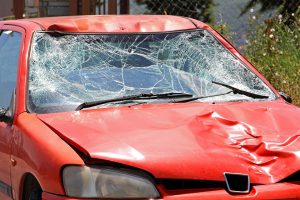 As employees work from home and schools offer remote learning, traffic volumes remain low across Massachusetts. This may mean less stressful driving at times. Yet it can also lead to an increased risk of car accidents caused by speeding.
As employees work from home and schools offer remote learning, traffic volumes remain low across Massachusetts. This may mean less stressful driving at times. Yet it can also lead to an increased risk of car accidents caused by speeding.
Across Massachusetts, traffic volumes are 20 percent lower than last year at this time, according to a MassDOT presentation this month. In some areas, traffic is even lighter. For instance, in the City of Boston, traffic is down as much as 48 percent.
North of Boston, there is an 18 percent decrease in traffic right now, according to the presentation. South of Boston, there is a 19 percent drop in MassDOT District 5, which includes Plymouth County, Bristol County and the Cape and Island. West of Boston, the decreases range from 28 percent to 18 percent.
If you commute, a MassDOT official said there is no peak traffic hour right now. This is true during both the morning and the afternoon/evening commutes. There is a consistent bump in traffic during these times, but nothing near pre-COVID 19 traffic levels.
An easier drive into Boston would be welcome news if not for COVID-19.
Boston is known for traffic gridlock. Many publications and websites have ranked the city’s driving experience among the worst in the U.S. Most recently, we earned a new honor, when WalletHub ranked Boston the 83rd worst of 100 driving cities.
According to the survey, Boston drivers log the most hours sitting in traffic congestion each year, along with drivers in New York City, Chicago, Philadelphia and Washington D.C. The rankings also noted Boston drivers are more likely to have a car accident than those in other cities.
Boston was ranked among the top 5 cities where drivers were most likely to have a traffic crash. This list also included the California cities of Oakland and Los Angeles, Washington D.C. and Baltimore, Maryland.
Speeding Accidents
Right now, there are fewer cars on the road. This may sound safer.
But NECN recently reported on the dangerous trend of drivers speeding into open roads. In Iowa, the state patrol recorded a 101 percent increase in drivers speeding 100+ mph from January through August. There was also a 75 percent increase in tickets for drivers who were traveling 25 mph or more over the speed limit.
In California, the highway patrol issued more than 15,000 tickets from mid-March through August 19 for speeding over 100 mph. This was a 100 percent increase over the same period in 2019.
Then, there is Ohio. Between April and September, state troopers issued 2,200 tickets to drivers traveling more than 100 mph between April and September. This marked a 61 percent increase from the same time last year. The highest speed was a stunning 147 mph.
Speeding can cause serious and fatal injuries, even when traffic is light. In April, there were 28 deaths, compared to 27 in April 2019 – despite half the traffic.
Like other states, Massachusetts has seen an alarming number of drivers cited for speeding. In March and April alone, Massachusetts police issued 15,071 speeding citations, including 259 drivers traveling at 100 miles or more, according to a Boston Herald report.
Police cited 1,035 drivers for traveling speeds of 90 mph to 100 mph. Another 2,518 were traveling between 80 and 90 mph.
Some of the fastest drivers were traveling even faster, at unbelievable and unsafe speeds. In Stoughton, a driver was caught traveling 140 mph in a 65 mph zone. Two other drivers reached 130 mph speeds in Ludlow and North Attleboro. On Cape Cod, a driver was caught traveling 125 mph.
Speeding is highly dangerous. MGL c.90, § 17 states, “No person operating a motor vehicle on any way shall run it at a rate of speed greater than is reasonable and proper, having regard to traffic and the use of the way and the safety of the public.”
Drivers have a duty to use reasonable care in Massachusetts. This means traveling the speed limit or slower when necessary for safety, even when there is no sign posted. In Massachusetts, cities and towns have a default speed limit of 30 mph in thickly settled or business districts. In 2016, the state passed the Municipal Modernization Act allowing communities to lower default speed limits to 25 mph. Many communities have done so and enjoy the improvements. Near schools and work zones, the speed limit is 20 mph.
Free Legal Consultation – Boston Car Crash Attorneys
If you have been injured, it is in your best interest to consult an experienced car accident lawyer. Since 1992, Breakstone, White & Gluck has represented those injured by negligent driving across Massachusetts, including in Boston, Cambridge, Quincy and the South Shore, the North Shore, Plymouth, Brockton and Cape Cod.
For a free legal consultation, contact our attorneys at 800-379-1244 or 617-723-7676 or use our contact form.
Drivers Making Unsafe Turns Cause Many Pedestrian Accidents in Intersections
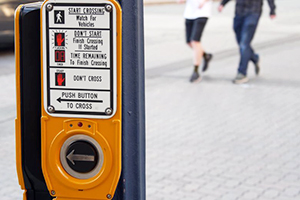 Many of us will head back to work and school in September and October, at least part time. Due to COVID-19 and our new schedules, some of us may choose to walk for the first time, instead of relying on public transportation. If you walk, use caution – especially in intersections.
Many of us will head back to work and school in September and October, at least part time. Due to COVID-19 and our new schedules, some of us may choose to walk for the first time, instead of relying on public transportation. If you walk, use caution – especially in intersections.
Nearly 20 percent of all traffic accidents result in pedestrian fatalities, according to the National Safety Council. An estimated 40 percent of all pedestrian accidents occur in intersections, according to the Federal Highway Administration (FHWA).
A few facts from a FHWA study on pedestrian accidents in intersections:
Drivers are making unsafe turns. According to this study, one in five pedestrian accidents at signalized intersections occurred when vehicles made unsafe turns.
Left-turning vehicles cause more pedestrian accidents at intersections. Pedestrians at signalized intersections are more likely to be hit by a left-turning vehicle. Researchers found 60 percent of drivers who hit pedestrians turned left, while 40 percent turned right. The FHWA researchers noted a driver’s view may be impeded more when turning left.
Pedestrians walk safer in groups. Researchers concluded that pedestrians walking in groups were less likely to be hit by left-turning vehicles than those walking alone. Again, this may be due to drivers being able to see pedestrians better. There was a notable difference – three out of four pedestrians hit by left-turning vehicles were walking alone.
Take Steps to Protect Yourself at Intersections
If you are a pedestrian, cars and trucks have the advantage in size. You have to assume drivers won’t always be able to see you as traffic moves. You also have to be prepared for negligent operators, who are speeding or allow themselves to become distracted.
You can take steps to protect yourself though. Purchasing a neon vest is a good place to start. If a driver can see you, they may be more likely to slow down. Also take advantage of technology. Use Google Maps or another traffic app to plan your walking route.
At intersections, look for crosswalks with pedestrian traffic signals. Wait for the walk signals before crossing. Drivers have a responsibility to yield the right of way to pedestrians in all marked crosswalks in Massachusetts. Yet pedestrian signals are more visible and can make a big difference in protecting pedestrians.
Drivers also have a responsibility to check for pedestrians (and cyclists) before turning at intersections. Studies have found that drivers are not looking enough – which is frustrating because more cars now have rearview mirror cameras to help them. Drivers need to be scanning the intersection more in front and behind for pedestrians and cyclists. This is critical in Boston, Cambridge and other cities because commercial truck drivers travel much higher up than pedestrians and cyclists and often, there is no eye contact. But truck drivers are not the only risk. Pedestrians have to be aware of all vehicles – SUVs, cars, buses. These drivers should also be paying attention to you.
Breakstone, White & Gluck – Boston and Cambridge Pedestrian Accident Lawyers
At Breakstone, White & Gluck, our Boston personal injury lawyers fight for justice for those who have been seriously injured by negligence or wrongdoing. With more than 100 years combined experience, our attorneys specialize in the representation of those injured in pedestrian accidents and bicycle crashes in Massachusetts. For a free legal consultation, call our attorneys today at 800-379-1244 or 617-723-7676 or use our contact form.
Now, a Focus on Pedestrian Safety in Massachusetts
After an extended leave, many Massachusetts families are now getting ready for back to school and a return to the workplace – at least part time to start. If you are going back and plan to commute on foot, we have some safety tips to share.
First, walking has so many benefits, including fresh air and exercise. We hope you can relax and enjoy this time and decompress. Transitioning back to work and school will be a challenge at times.
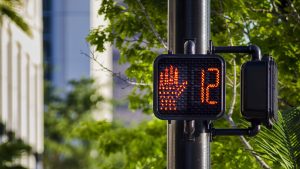
As Massachusetts transitions back to work and school, more people will be walking. Our tips to help pedestrian commuters stay safe.
But still, it is important to remember the risk for pedestrian accidents and observe traffic conditions as you walk. If you normally drive or use public transportation, your commute will be much different on foot.
Before COVID-19, pedestrian accidents accounted 20 percent of all traffic fatalities in Massachusetts, according to the National Highway Traffic Safety Administration (NHTSA). Each year, as students head back to school, there is a lot of talk about pedestrian safety. This year, attention to safety is even more critical because traffic will be unpredictable for a while. You can also expect more pedestrians as well.
Drivers, especially truck drivers and bus drivers, must be vigilant in watching out for pedestrians and cyclists. But pedestrians should also be vigilant and take precautions.
Our pedestrian safety tips:
Be Visible. Dress to stand out to traffic. Think bright – a vest, jacket, shirt or baseball cap with neon-reflective material. You do not have to spend a lot of money. You can find neon-reflective on all types of products in all price ranges.
If you are a parent, encourage your children to wear bright colors. Remember, your child’s backpack doesn’t just carry books; you can purchase one with neon-reflective material and make it a tool for safety.
Use Sidewalks and Crosswalks. Always look for sidewalks and walk on them. If there are no sidewalks, walk as far as you can left, facing traffic. Use crosswalks with pedestrian traffic signals.
Learn Your Route. Take some time to plan a good route for yourself or your children. You can use online map tools, but try to memorize your path – and a backup route. Locate pedestrian crosswalks and traffic signals. Wait for the walk signal before crossing. Look for streets which have fewer lanes of traffic to walk across. Also watch for bike lanes.
Remember School Safety. School bus drivers are responsible for getting children to and from school safely. This is the most critical commute on Massachusetts roads.
Whether you are a parent, driver or pedestrian, you can support school bus safety. When a school bus flashes its yellow lights, it is slowing down. When it stops, extends its arm and flashes red, the bus has stopped to allow children to cross. Drivers must stay 100 feet back.
As a pedestrian, you may keep walking if you are on the sidewalk and don’t interfere with the school bus. But there are times when you should stop if you are walking on the road. Allow the school bus driver to safely stop so children can board safely. Also allow vehicle to safely depart.
Watch for Large Trucks. We urge pedestrians to keep your distance from trucks. Each year, truck crashes injure and kill pedestrians in Massachusetts. The larger the truck, the greater the blindspot and the greater the risk to you.
Trucks can strike pedestrians head-on, but they can also hit them from behind or from the side. Pedestrians can be swept under a truck and dragged. This can happen when pedestrians are walking alongside the road or as they wait to cross a road and a truck approaches.
Because large trucks are everywhere in the Boston area, your best defense is to watch for them, stay on sidewalks as much as possible and find crosswalks with pedestrian safety signals. Truck drivers may not always check for pedestrians. They are more likely to tune into traffic signals in front of them.
Remember, trucks can also be deadly to cyclists. Right hook accidents occur when a driver fails to give a cyclist enough room when turning right at an intersection. What you can do to prevent a serious bicycle accident: Stay on the sidewalk as much as possible. Leave the bike lanes and outer traffic lanes to bicyclists so they have room to adjust to traffic conditions.
Check for Traffic Updates. Before leaving for work or school, check local traffic updates and police department websites. After the COVID-19 closures, some Boston area communities have made changes to accommodate more pedestrians or allowed restaurants to set up outdoor dining in streets and sidewalks. This may impact your commute to work or school. Again, this is another reason to tuck a lightweight neon vest in your bag. Be visible so drivers have a warning that they should stop for you.
Stop and Report Pedestrian Accidents: If you are negligent and hit a driver, you have a responsibility under Massachusetts law to stop and report the crash to police. As stressful as this situation may be, you have to stop, call 911 and make sure the person receives immediate medical attention.
But often, other pedestrians and other drivers witness pedestrian accidents. Stop and report the crash to 911, even if you were not involved. Never assume another witness will. About 1 in 5 pedestrian crashes involve hit and run drivers, according to AAA research. In these cases, pedestrian accident victims are left without access to the driver and their auto insurance policy, which should provide compensation for their medical bills and other financial losses.
About Breakstone, White & Gluck – Boston Personal Injury Lawyers
With more than 100 years combined experience, Breakstone, White & Gluck specializes in representing those injured by negligent and reckless driving in Boston, Cambridge, Quincy and across Massachusetts. Our attorneys are highly experienced in advocating for victims and families after pedestrian accidents and crosswalk crashes. We have secured compensation from negligent drivers as well as major bus operators, such as the MBTA. If you have been injured, learn your legal rights. For a free consultation, contact Breakstone, White & Gluck at 800-379-1244 or 617-723-7676 or use our contact form.
Read about some of our awards:
$7.1 Million – Verdict for pedestrian seriously injured in MBTA bus accident
Our attorneys secured a $7.1 million verdict for our client who was hit by an MBTA bus in a South Boston crosswalk.
$2.15 Million – Settlement for pedestrian injured by crash at strip mall
Our attorneys negotiated a $2.15 million settlement after our client was struck by a vehicle as he left a strip mall.
$1.375 Million – Settlement for pedestrian struck by speeding MBTA bus
Our attorneys reached a $1.375 million settlement after our client was struck by an MBTA bus in Roxbury and suffered a traumatic brain injury.
$1.25 Million – Wrongful death settlement for pedestrian hit in crosswalk
Our attorneys negotiated a $1.25 million settlement for family members of a pedestrian struck and killed in a crosswalk.
As Riders Return, a High Number of Motorcycle Accidents and Fatalities in Massachusetts
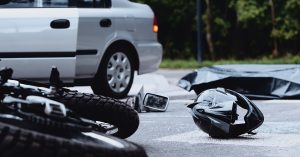
Massachusetts has seen a number of motorcycle accidents, as riders and other drivers return to the road after COVID-19.
Five months from the outset of COVID-19, many motorcyclists are just getting back on Massachusetts roads. Yet already, we have seen several serious and fatal motorcycle accidents in the Boston area, Cape Cod and across the state, a reminder that riders need a little extra room for safety.
In recent weeks, motorcycle accidents have been reported in North Adams, Westfield, Springfield, Wrentham, Taunton, Dudley, Milton, Randolph and Lynn. Toward Cape Cod, motorcyclists have been injured in Bourne, Hyannis, Lakeville, Randolph and Bridgewater.
All these accidents, coming as the state of Massachusetts re-opens, show the need to emphasize motorcycle safety. Motorcyclists have a responsibility to follow traffic laws and wear helmets and protective clothing. In turn, drivers must pay attention to how close they are to motorcyclists and watch when turning or changing lanes.
Commit to drive safely. Obey speed limits and follow traffic laws to reduce your risk of car accidents and motorcycle collisions. Right now, traffic is unpredictable and schedules are less important. After days of little traffic, you may see several hours of cars and trucks speeding. Some vehicles are really racing because there are open roads, very light traffic.
First, take a good look at a motorcycle. Motorcyclists operate on two wheels, without the protection of a windshield and a car or truck frame. Because of this, motorcyclists are more likely to be injured should there be a collision on the road. Large trucks are the most dangerous vehicles on the road. They can hit motorcyclists, then drag them under the carriage. Truck accidents injuring motorcyclists are most likely to be fatal. But motorcyclists are highly vulnerable to any unexpected movement, making it important to give them room.
Raise Your Awareness About Motorcycle Accidents
Fatal motorcycle crashes. Motorcyclists are much more susceptible to crashes than other drivers. According to the National Highway Traffic Safety Administration (NHTSA), motorcyclists account for 3 percent of all registered vehicles in the U.S. and just .6 percent of all vehicle miles traveled. Yet, per vehicle, motorcyclists have 6 times the fatality rate as other drivers.
Follow motorcycles at a distance. If you are driving behind a motorcycle, give the driver additional space. More than you would provide any other vehicle. Recognize that drivers are more likely to be involved in a motorcycle accident when making a left turn in front of a motorcyclist.
Never try to anticipate the motorcyclist’s next turn so you can get moving again. Likewise, do not trust the motorcyclist’s blinker. It may not have fully cancelled out after a prior turn or lane change. You just have to be patient.
Broadside collision. When a driver collides with the side of a motorcycle at a high speed, they can seriously injure the motorcyclist. These are also known as T-bone accidents or side impact motorcycle crashes.
Blindspots and mirrors. Use your mirrors as a guide to help you see the motorcyclist. But remember, motorcyclists can be in your blind spot. Even when you see them, you may not understand how far they are actually away from your vehicle. This is another reason to slow down and give riders more space.
Poor visibility. Respect hazardous weather conditions. Be aware that you may have to really look for motorcyclists, slow down and give all motor vehicles more distance.
Road hazards. Give motorcyclists additional time and space when the road surfaces change. For example, aging roads with potholes, construction work zones and railroad tracks.
Obstructed views. Many motorcycle crashes happen because drivers neglect to look. They may be busy or distracted as they back out of a parking lot or approach a turn. Other times, drivers make bad decisions because of obstructed views. They make the decision to turn or go when they don’t have a full view of the road, parking lot, rotary or intersection. There may be a truck blocking their view from behind or an SUV next to them at a traffic light. Make sure you can see the entire road and continually check your side and rearview mirrors to help you see around large trucks.
Safe driving behaviors. We have now reached August, the last month of summer. Enjoy your time, but please use good judgment. We urge you not to operate a motor vehicle or motorcycle while under the influence of alcohol. Drunk driving, distracted driving and operating while fatigued are highly dangerous. Use caution driving at night, just as you would during the day. You may not realize just how many pedestrians, cyclists or motorcyclists are out this year.
Motorcycle Safety Resources
Finally, if you are a Massachusetts motorcyclist, remember your responsibilities and the resources you have to protect yourself. Under Massachusetts law, motorcyclists are required to wear a helmet when riding to protect themselves from head injuries. Wearing a helmet, along with the right safety gear, is fundamental to protecting yourself. The state of Massachusetts also offers the Motorcycle Ridership Education Program, which offers training for beginning and advanced riders.
Purchasing the right types and amount of auto insurance is also critical for motorcyclists. Read our article, “Massachusetts Motorcyclists: Buy the Right Types of Auto Insurance to Protect Yourself and Your Finances.”
Free Legal Consultation – Boston Motorcycle Crash Lawyers
At Breakstone, White & Gluck, our Boston motorcycle accident lawyers represent those who have been injured by negligent or reckless driving. With more than 100 years combined experience, our attorneys have won several major awards for motorcyclists.
For a free legal consultation, call Breakstone, White & Gluck at 800-379-1244 or 617-723-7676 or use our contact form.
Fewer Children Visiting Hospitals for Sports-Related TBI
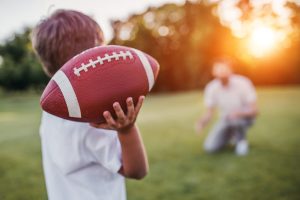
There has been a drop in child sports-related TBI visits to ERs, according to the CDC.
According to new research, fewer children are visiting the hospital for sports and recreation-related traumatic brain injuries. This is being largely driven by changes on the football field.
After a decade of rising injuries and the passage of state concussion laws, fewer children have been participating in youth football, contributing to the reduction in injuries. Going forward, the researchers are focusing on studying safer play techniques which could limit contact in football. They will also continue investigating head injuries in other sports, such as soccer and basketball, where the numbers didn’t change significantly.
The Centers for Disease Control and Prevention (CDC) released the research in a recent weekly report. Researchers analyzed data from the National Electronic Injury Surveillance System-All Injury Database.
What the Researchers Learned
The number of children visiting the hospital for sports and recreation-related traumatic brain injuries fell 32 percent from 2013 to 2018.
Researchers attribute this to changes in youth football programs across the U.S. Since 2010, participation has fallen 24 percent. Meanwhile, there was a 39 percent decline in football TBI visits from 2013 and 2018.
This was an encouraging sign. Previously, from 2001 to 2013, there had been a 200 percent increase in children suffering football-related traumatic brain injuries and ER visits. This was among children age 5-17.
While football-related TBI ER visits decreased, there was not significant movement in TBI ER visits for basketball and soccer, two other contact sports.
The CDC and researchers are also studying safer tackling techniques in football. Several sports leagues have also introduced new approaches which limit contact during practice. These include the National Federation of State High School Associations and its member states, along with two major youth football programs.
Concussions and Traumatic Brain Injuries
According to the CDC, a TBI is caused by a bump, blow or jolt to the head. It may be a penetrating head injury that disrupts the brain function. A concussion is a “mild” traumatic brain injury. A concussion may lead to brief changes in mental function and consciousness. Those injured may not realize they have a concussion and learning to recognize potential symptoms can save their life.
When it comes to your child, physicians, pediatricians, schools and caregivers have a responsibility to follow certain steps if they play sports and suffer a concussion or repeated concussions.
Massachusetts Concussion Protocols: Preventing Injuries and Caring for Students
CDC researchers noted that many children can recover from a sports and recreation-related TBI within 4 weeks. However, there is a continued focus on reducing long-term effects on a child’s brain development. Recovery must be carefully monitored.
Massachusetts and other states have passed laws to guide schools and sports leagues on how to prevent and treat injuries. Schools, leagues and coaches have a responsibility to follow the concussion protocols.
In Massachusetts, schools must provide students with training on how to recognize a concussion. Students must be removed from play if a concussion is suspected. They can only return with a doctor’s note. Read more about the Massachusetts concussion protocol on our website.
About Breakstone, White & Gluck – Boston Concussion Lawyers
Breakstone, White & Gluck and our Boston head injury lawyers represent clients after traumatic brain injuries and concussions caused by negligence. If you or a loved one has been injured, receive medical attention right away. Then, learn your legal rights.
For a free consultation with one of our lawyers, call 800-379-1244 or 617-723-7676. You can also use our contact form.
Safety Tips for Using Children’s Scooters in Massachusetts
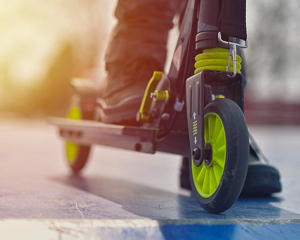
Safety tips for children’s scooters.
Children are eager to find fun activities this summer. In response, many parents have purchased new scooters online. As you open the box, remember to approach your child’s scooter as you would a bicycle. Make sure you have an age-appropriate and safe scooter model, along with a safety helmet.
Pre-Purchase: Read Product Materials
Before you buy, carefully read the product description. For children, plan to buy an age-appropriate non-motorized scooter. Check out online reviews and ask friends about their experiences purchasing scooters. Then, search for product recalls on the Consumer Product Safety Commission website. This is essential because at times, online vendors have been caught selling recalled products. Your child could be seriously injured on a recalled scooter.
Try to purchase a new scooter for your child. While bicycles can be passed down and refurbished, children usually wear their scooters out fairly well, especially the thin, fold-up models. If you do find a hand-me-down scooter, do a thorough inspection before giving it to your child. Locate the model number and check the recall database.
Post-Purchase: Inspect Your Delivery
When the scooter arrives, check that you have received the right model number and all the parts. Nothing should be broken or cracked. Register the scooter with the manufacturer to receive product recalls and other updates. Bicycles, skateboards and scooters all contain small parts and screws. Because your child probably rides daily, we suggest keeping the box. Scan the instructions and product support number so they are easily accessible.
Purchase a Helmet
As part of our Project KidSafe campaign, Breakstone, White & Gluck encourages children to wear bicycle helmets to protect against head injuries. Your child should also wear a helmet every time they ride a scooter. Take time to make sure the helmet is properly-fitted so your child is comfortable wearing it.
This is a suggestion and a requirement. A little background: Under Massachusetts law, children 16 and younger must wear helmets on bikes and scooters, as well as other riding toys.
The bicycle helmet law has been in place longer. In 1994, the state of Massachusetts approved a bicycle helmet law for children age 12 and younger. Then, in 2004, Massachusetts expanded the helmet law to children age 16 and younger on bikes, as well as scooters, skateboard, inline skates and manually-propelled wheeled vehicles. These laws are M.G.L. c. 85, § 11B and M.G.L. c. 85, § 11B1/2.
Some parents keep separate helmets for scooters and bikes. It is also acceptable for children to use one helmet, so long as it meets the federal safety standard for bicycles, properly fits and is in good condition. One reminder though: if your child wears one helmet, expect it to wear faster. Be prepared. Stowaway an extra helmet in your garage.
Look for helmets to meet this safety standard, U.S. Consumer Product Safety Commission (16 C.F.R. part 1203). These helmets are designed to protect against skull fractures and severe brain injuries sustained in bicycle accidents and falls. For more information, read the CPSC’s article, “Which Helmet for Which Activity?”
Driveway Safety
Many scooter accidents happen in or near driveways. Think about how you can protect your children while they ride. One idea is you can purchase driveway fencing. You can buy light-weight brightly colored fencing which retracts when you are done playing. Another strategy is you can park your cars between the children’s play area and the road.
Steer Clear of Large Vehicles
Even quiet streets see large vehicles, including SUVs, delivery trucks and trash vehicles. These vehicles can be deadly near young children on scooters. When a large vehicle appears, teach your child to move to a safe location (this may be your front lawn, your driveway, the sidewalk or the side of the road). Children are safest stepping off the scooter until the vehicle turns off the engine and parks or departs. Drivers backing up can be the most dangerous for children on scooters. Have your children wait inside while you back in or out of your driveway.
Bright Colored Clothing
Buy your child a brightly colored vest, shirt or jacket to wear when they ride near your home or around the neighborhood. Drivers don’t expect scooters – they move differently than bicycles or pedestrians – and you want them to really see your child. To reinforce the message, you can also wear brightly colored clothes as you walk along your child. Everyone is safer when they are more visible to traffic.
Park Scooters at Night
For safety, children should park their scooters at night. Drivers have a responsibility to look and operate with reasonable care. But the truth is more accidents occur at night and drivers are less likely to see bikes and scooters. Children’s scooters may have neon stickers, but these are hardly visible in night traffic.
Non-Motorized Scooters for Children
Say no to motorized scooters. The American Academy of Pediatrics (AAP) has advised against motorized scooters for children under 16. Powered scooters are associated with three times as many severe injuries to children in the U.S., according to a New York Times article on the study.
Scooter Injuries. In the 2008 study, children were more likely to suffer concussions and severe head injuries on motorized scooters. Leg injuries also increased.
More recently, in 2017, the CPSC reported non-motorized scooters were associated with the most injuries among two age groups, children 12 and younger and children under 15. That year, non-motorized scooters caused roughly 20 percent of injuries in both age groups and four deaths of children between 4 and 8 years old. All four children were riding scooters near their family’s home or driveway.
Defective Scooters. Do not assume your child was doing something wrong if the scooter starts to break or a piece falls loose. Manufacturers have had to recall defective scooters on many occasions. Report the incident to the manufacturer. Your report may confirm other reports and prompt them to issue a recall to prevent other scooter accidents and injuries. This is how the process works and it only works if consumers come forward with safety complaints.
Discard Scooters Carefully. If your child wore out their scooter, it’s not safe for use and you should disassemble it. This way, it will not injure another child.
About Breakstone, White & Gluck – Boston Personal Injury Lawyers
At Breakstone, White & Gluck, our Boston personal injury lawyers represent those who have been injured by negligence and recklessness. We are also committed to protecting against head injuries through our Project KidSafe campaign, donating 30,000 bicycle helmets to Massachusetts children since 2013.
We urge families to buy scooters carefully. Always buy a helmet. Always check for product recalls before you buy. Always carefully inspect the scooter when it arrives. Then, after you have taken these steps, you’re ready to enjoy the last few weeks of summer, watching your child ride their new scooter safely.
If you or your child are injured by negligence, please take time to learn your legal rights. For a free legal consultation, contact Breakstone, White & Gluck at 800-379-1244 or 617-723-7676 or use our contact form.
Backover Accidents Endanger Children
 It is frightening to watch a driver back up toward a child at play. At least 50 children are victims of backover accidents each week, according to KidsandCars.org. More than 70 percent of backover accidents involve young children and a parent or a relative. Many of these car accidents occur right in home driveways.
It is frightening to watch a driver back up toward a child at play. At least 50 children are victims of backover accidents each week, according to KidsandCars.org. More than 70 percent of backover accidents involve young children and a parent or a relative. Many of these car accidents occur right in home driveways.
As traumatic as backover accidents are, many injuries are preventable. Drivers can recognize the safety risk and make use of technology. Families can communicate and plan. Involve friends and family who visit and park at your home in this conversation. Before they arrive, suggest a safe parking space.
As a Massachusetts driver, you can help prevent backover accidents through a combination of steps. You can use a back-up camera. Stay aware of your blind zone. Near children, the most effective prevention may be getting out and walking around your vehicle. Make sure you have a clear path of travel and if you don’t, be patient. Stay where you are for an extra few minutes until the children have gone back inside.
For Families:
Comings and Goings. Start by keeping your family together when someone arrives and departs. Keep children inside and let them wave to the driver from the window. If children are outside, an adult should be outside supervising them. Gather together on the front steps or a safe place. Hold on basketball, bikes or riding toys until the person leaves. It’s hard for a young child to resist chasing a ball.
Driveway Barriers. Parents can keep traffic cones in the shed. Put the cones out in your driveway when you are concerned or to block delivery drivers from pulling. You can also look into portable neon driveway fencing products.
For Drivers:
Walk Around the Vehicle. Even if drivers have a back-up camera, walk around your vehicle. Check underneath your vehicle and observe if a child or anyone is nearby or may move into your path of travel (such as a child riding a bike or someone pushing a shopping cart).
Park Consistently. If you are a parent or live near children, park your vehicle in the same place in your driveway or garage each day. Be consistent with your approach. Whether you pull in or back into your driveway or garage, make sure children are in a safe place. If you are a parent, keep children in the backseat if you back in. Come to a complete stop, turn and check on your children in the backseat, then get out of the vehicle together.
Large Vehicles. Trucks, SUVs, RVs and vans are more likely to cause backover crashes, according to NHTSA. The taller the vehicle, the greater the driver’s blind zone.
Blind Zone. The blind zone is the area behind a vehicle which a driver can’t see. Whatever vehicle you drive, learn about your blind zone. Consumer Reports found small sedans usually have a 12 foot blind zone for the average driver. Midsized SUVs have an 18-foot blind zone, while large SUVs have 19 feet. Pick-up trucks have the largest blind zone among the passenger vehicles – 24 feet.
Back-up Cameras. As of May 2018, all new passenger cars, trucks, vans and other vehicles weighing less than 10,000 pounds have to be outfitted with rearview monitoring technology, according to Edmunds.com. If you are driving an older vehicle, you can install a back-up camera on your own – and it is an important tool which can save lives. Read “How to Add a Backup Camera to Your Car,” by Consumer Reports.
Bicycles and Pedestrians. Backover accidents can also injure adults, including cyclists and pedestrians. Look all around your vehicle before you pull out of a parking space. Be aware of different types of activities and movements in downtown and other business areas. When possible, avoid parking near crosswalks.
Parking Lot Crashes. In parking lots, pull into parking spaces whenever possible. Keep watch of pedestrians and shoppers when you pull out or back out of spaces. Set aside cell phones and do not drive when you are overfatigued.
Another note is right now, many Massachusetts grocery stores, retailers and restaurants are offering curbside pick-up services. While convenient, remember not every business is experienced with this. Drive into parking lots slowly and watch for curbside pick-up signs. If there are no signs, find a parking space and call the store. Always watch for pedestrians, who are also just figuring this all out.
Boston Car Accident Lawyers – Free Legal Consultation
At Breakstone, White & Gluck, our Boston car accident attorneys specialize in representing victims of car accidents and pedestrian accidents. We represent those injured across Massachusetts, from Boston and Cambridge to the North Shore to Quincy and the South Shore and Cape Cod.
For a free legal consultation, contact our attorneys at 800-379-1244 or 617-723-7676 or use our contact form.
After Fatal Dog Attacks, a Tragic Warning for Massachusetts Families

Dog owners made horrific decisions which killed young children in 2019. In Massachusetts, a 14-year-old boy was mauled to death by at least four dogs in Dighton. Then, in Michigan, two young children lost their lives to separate pit bull attacks, just months apart.
No one wants to think about the potential dangers of dogs. This is because many people own a dog or call themselves dog lovers. But the reality is dogs can be a public health risk when left unsupervised or when owners make poor decisions. Or when they interact too closely with children. Now, during the summer months, is the time to consider your family’s safety.
Children face the greatest risk of injury and suffer more than 50 percent of all dog bites, according to the Children’s Hospital of Pittsburgh.
Dog bites and attacks caused severe injuries and deaths across the United States and here in Massachusetts last year. In May 2019, a 14-year-old boy was killed in a dog bite attack in Dighton. He was found laying dead at a property where he was caring for dogs without supervision. There were 4 dogs in the area where his body was found and 7 other dogs on the property, according to a NBC Boston report. The dogs were reportedly not licensed in Dighton.
The boy’s grandmother had dropped him off on the large property to tend to the dogs, as she had for several months, while the dogs’ owner was away in Boston, according to the Sun Chronicle newspaper. The grandmother waited in the car and grew concerned when the boy did not return. A neighbor found the boy dead and police were called. The Bristol County District Attorney’s office investigated but declined to criminally charge the dogs’ owner.
Then, the state of Michigan lost two young children within a few months. In August 2019, three pit bulls savagely attacked a 9-year-old girl in Detroit as she rode her bike in an alley near her home, according to a local news report. The girl died from multiple injuries, despite a neighbor’s attempt to help, by shooting and killing one of the dogs. The owner of the dogs was arrested, ultimately charged with second-degree murder.
Prosecutors alleged the owner knew the dogs “were dangerous, loose and unsecured” in the backyard of his home, according to the news coverage. He allegedly went to a nearby store and the dogs broke free from the yard while he was away. The initial investigation found the fencing around the home was damaged and the garage door had also been left open.
In October, another child was attacked just a few miles away in Hazel Park, Michigan. This time, the 4-year-old boy was killed by a pit bull right in his own home. His family had been pet sitting for a friend.
“A kind gesture to help a friend in a time of need, for a dog that was said to have never shown aggressive behaviors has turned into a horrifying loss for our family,” the family said in a statement.
The attack only ended when police shot the dog with a taser gun and it fled. The boy was later pronounced dead at a local hospital. The boy’s mother had fought to save her son, stabbing the dog with a knife. She was later transported to a local hospital with non-life threatening injuries.
A Dog Owner’s Legal Responsibilities in Massachusetts
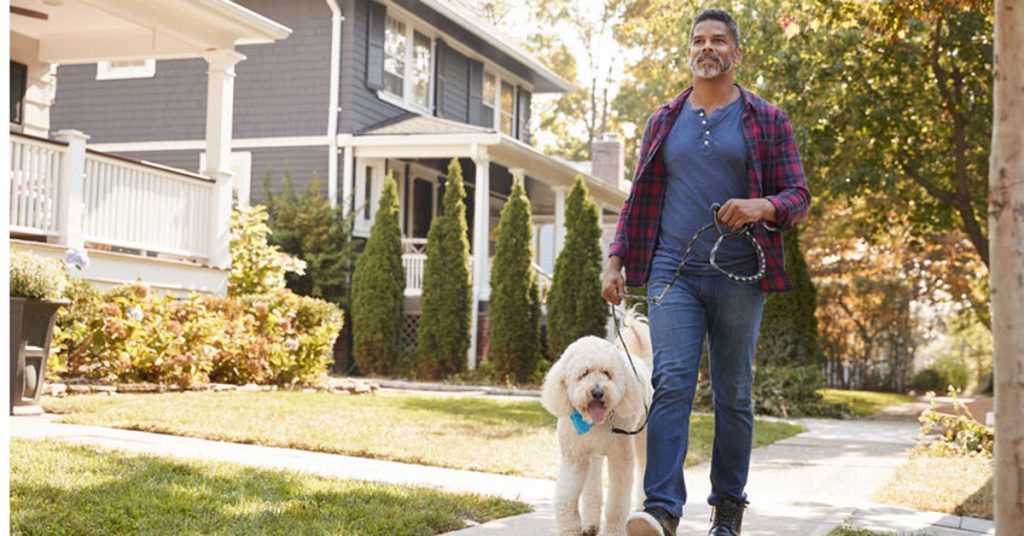
Always use a dog leash when you walk through your neighborhood.
To dog owners, we urge you to tend to your responsibilities. Follow your community’s local leash laws and registration requirements.
Restrain and supervise your dog at all times. In Massachusetts, the owner or keeper of a dog can be held financially responsible when their animal attacks someone. Under Massachusetts law, the injured person may seek compensation through your Massachusetts homeowner’s insurance policy. There is strict liability when a dog causes injuries, scarring or wrongful death. One does not have to prove the dog had a history of being dangerous or vicious.
Adults have a responsibility not to trespass or torment a dog at the time of the attack. But dog owners can be held liable when young children step onto their property without invitation, then are attacked. This is a very important point for dog owners to understand.
Homeowners can prevent these injuries by inspecting their home and property. Consider the age of your neighbors’ children. In most cases, the best investment you can make is strong fencing which keeps your dog contained and stops children before they grow interested in watching your dog.

When you visit friends or family, keep young children away from their dog. You will have plenty of time to introduce your child to dogs later, as they grow older.
To parents and neighbors, never underestimate the risk of dogs. Dog bites and attacks are more common than most people realize, even when you and your children know the dog. In fact, 77 percent of dog bites cause injury to their owners and children, a relative or family friends, according to the Children’s Hospital of Pittsburgh.
Dogs may be well behaved. Owners can feed and exercise them regularly. Yet they can still be unpredictable or become stressed and attack without warning. They are not a reliable combination with young children, no matter how dog-friendly their owner says they are.
We encourage you to exercise caution around dogs. If you are a parent, keep your children away from dogs. You have the choice when you visit friends or family members who own dogs. These are social visits and letting your child approach a dog while you talk is dangerous, even if they are with another person or older child. You want to introduce your child to dogs when they are older, taking time to consult your children’s pediatrician and school. You want to be right there with your child, not watching them from across a yard.
Watch Your Neighborhood
The risk for dog bites typically rises in the summer, with the warm weather and the start of school vacation. This year, Covid-19 has changed everything in Massachusetts. Your neighbors may be spending even more time at home. You may see their dogs out more, sometimes without supervision. You may also see some new dogs.
Call your local animal control officer if you are concerned about an unsupervised dog. Your neighbors have a responsibility to follow leash laws and these are in place to prevent injuries. Another reason is some of these dogs may also be abandoned, neglected or starved. They need special attention before they contract and spread rabies, or attack.
Facts About Dog Bite Injuries
- From 2005 to 2018, 471 Americans were killed by dog bites, according to DogBite.org, a victim’s group.
- Pit bulls caused more than 65 percent of fatal dog bites and attacks, according to the group.
- Children age 5 to 9 are the most frequent victims of dog bites and attacks, according to a WBUR article.
- Dogs are most likely to bite children in the face, neck and head, the Children’s Hospital of Pittsburg reports.
Seeking Medical Treatment After Dog Bites and Attacks
Most dog bites and attacks are serious. Call 911 and wait for emergency medical services. Even if you or your child have only suffered a minor wound, we encourage you to still call your pediatrician or doctor. Ask to be treated right away. This is critical because not all dogs are vaccinated.
Free Legal Consultation – Boston Dog Bite Lawyers
Breakstone, White & Gluck has more than 100 years combined experience representing victims of dog bites and attacks in Boston and across Massachusetts. If you or your child has been injured, you may have the right to pursue financial compensation for your recovery. You may be entitled to seek damages for medical expenses, pain and suffering and other financial losses. This compensation can also pay for counseling for emotional distress.
Learn your legal rights. Contact our Massachusetts dog bite attorneys for a free legal consultation at 800-379-1244 or 617-723-7676.



